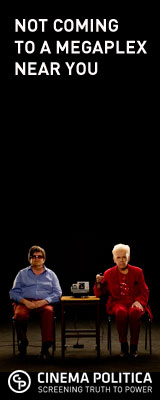March 24, 2010
Ada Lovelace: 'Enchantress of Numbers'
By
Katherine Dodds
OK so I was never good at math, but I was excited to discover that the inventor of the world's first computer program was a woman!
In 1843 Ada Lovelace anticipated the development of computer software, artificial intelligence and computer music. She wrote the first recorded 'program'. All this at a time before computers as we know them existed.
 Ada Lovelace, daughter of a scoundrel poet father (no less than Lord Byron) and a math-loving mother (dubbed "princess of parallelograms" by his nibs), was known as "enchantress of numbers." Sadly Byron's enchantment with these women of figures ended when baby-Ada was a month old. He took off, never to return.
Ada Lovelace, daughter of a scoundrel poet father (no less than Lord Byron) and a math-loving mother (dubbed "princess of parallelograms" by his nibs), was known as "enchantress of numbers." Sadly Byron's enchantment with these women of figures ended when baby-Ada was a month old. He took off, never to return.
Her mother -- Anne Isabella Milebanke -- taught Ada to love math. At age 17, Lovelace collaborated with Charles Babbage, who created the first calculating machine, (before this 'computers' were people, who computed). He called his invention the "Difference Engine". He then went on to envision something even more powerul -- the "Anyalytical Engine", which would be able to store data and perform sequences of instructions off punch cards fed into the machine.
Ada became an expert in the theory of these engines, and set to work translating an Italian scientist's report on Babbage's lectures. As a woman, at those times, it hadn't really occured to her to author her own scientifc paper. But Babbage saw what she could do -- and he encouraged her to add her own notes to the translation. Ada's "translation and extended notes" ended up being three times as long as the original and became the most important work describing how the Analytical Engine could be used.
Ada wrote in her Notes "We may say most aptly that the Analytical Engine weaves algebraical patterns, just as the Jaquard loom weaves flowers and leaves."
Ada's "Notes" contained the first published computer program, instructions in how to calcluate Bernouli numbers. It didn't look much like the code we use today, but when punched into a card it looked a lot like the '70s era punch cards that were used in the early days of computers.
Babbages engines were never actually built, but Lovelace's visions did become reality, when the first programmable computers were built in thr 1940s. I'm not fond of the U.S. Military, but they did name the first standardized computer language that they used for their applications after her. The "ADA" language is still in use in "systems such as air traffic control, in planes such as the Boeing 777, in rail transport including the TGV in France, the New York subway and London's tube, and in space missions such as Mars Express and the Beagle 2".
So in celebration of Ada Lovelace Day -- go play on google, and find some more blogs about her. The Finding Ada folks had over 1000 pledges for bloggers on this day...
And all you women coders out there -- this is also your day!
Sources for this bit-o-text:
"Ada Lovelace: Visions for Today" by Rachel Thomas in + Plus online mag
"Ada Lovelace, 1815 - 1852" by Mary Bellis in About.com:inventors
Wikipedia: Ada Lovelace
Tag(s):
Ada Lovelace Day
Recent Blogs by Katherine Dodds:
|
 |
 Katherine Dodds AKA "Kat" is the founder of Good Company Communications and HelloCoolWorld.com. Trained in renegade advertising & branding through her work with Adbusters in the '90s, Kat's early induction into the possibilities of the web-world was inspired by the term hypertext, which she immediately found comforting. She is dedicated to cause-related communication and to the development and use of tools that promote democratic processes.
Katherine Dodds AKA "Kat" is the founder of Good Company Communications and HelloCoolWorld.com. Trained in renegade advertising & branding through her work with Adbusters in the '90s, Kat's early induction into the possibilities of the web-world was inspired by the term hypertext, which she immediately found comforting. She is dedicated to cause-related communication and to the development and use of tools that promote democratic processes.
|








